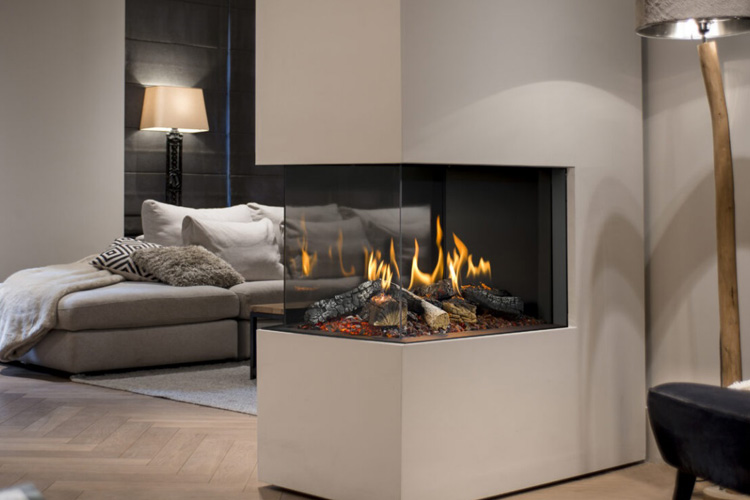Are you planning on using a fireplace soon? While they’re great at adding a lot of warmth to a room and making the atmosphere feel more relaxing and homey, they have some unique quirks that one must know to avoid.
For example, not venting your fireplace correctly can lead to many problems. Is your fireplace an older one requiring manual venting?
Sounds familiar? If so, you should know how to avoid common fireplace buyer mistakes so you’re ready to go when the time comes. Here’s what to do and what not to do:
1. Not Researching Suppliers in Advance
Fireplaces can be a significant investment from a warmth and comfort standpoint and an aesthetic perspective. Unfortunately, many buyers make mistakes that can cost them more money than necessary. One common fireplace installation process mistake is failing to research suppliers in advance.
Before making any decisions, looking into the supplier’s reputation is essential. Also, it is crucial comparing fireplace costs against those of competitors. Make sure to research customer reviews, read up on any warranties or guarantees offered, and ask specific questions you might have.
If a supplier cannot provide satisfactory answers, it may be best to look elsewhere. In addition, checking local or state building codes may be necessary. Fireplaces must meet specific regulations to be installed.
You should also factor in the installation cost, as it is often not included in the prices quoted by manufacturers. Taking the time to 0do your due diligence before making a purchase can save you a lot of trouble in the long run.
2. Improperly Sizing the Fireplace
Before making the purchase, it is essential to check the square footage of the space and the number of windows in the room to determine the size of the fireplace needed.
If the fireplace is too large, it can overwhelm the room; if it is too small, the room may not be comfortable and warm. Additionally, the size and style should work with the other furniture and decor in the room. Lastly, venting should be considered; gas fireplaces create less air draft while wood-burning fireplaces produce more.
Regardless of the type of fireplace, proper airflow and ducting are essential. Taking the extra time to appropriately size and select a functional and aesthetically pleasing fireplace can save money in the long run.
3. Ignoring Fireplace Maintenance
A home’s fireplace should be inspected annually, preferably in late fall or early winter. Not only do inspections keep the system running smoothly, but they can also alert the owner to any potential hazards, such as a blockage or built-up creosote. When neglected, creosote, a combustible resin, can cause a chimney fire.
To prevent this, many homeowners purchase a chimney sweep. This can adequately clean the chimney to remove all of the buildup. Additionally, it’s essential to have flue pipe liners regularly inspected. This is to help detect cracks, which can cause problems as well.
Furthermore, carbon monoxide detectors should be installed and checked frequently since a blocked chimney can allow carbon monoxide to leak into a home. By focusing on proper maintenance, potential fireplace buyers can reduce their risk of dealing with costly repairs and possible safety hazards.
4. Missing Necessary Fireplace Safety Feature
When purchasing a fireplace, safety should be a top priority for buyers. Common mistakes made by buyers include not checking for necessary safety devices such as carbon monoxide detectors, fire extinguishers, and flame arrestors. Installing these wall mounted electric fireplace without these devices may result in the release of dangerous gases that may lead to severe injury or even death.
To avoid such mistakes, it is essential to consult with a certified fireplace specialist or your local fire safety official. They can help you determine what safety devices are necessary for your fireplace type.
They offer advice on how to install and maintain them. Additionally, it is wise to have an annual fireplace inspection and maintenance service. This is to ensure all safety devices are in proper working condition.
5. Choosing Poor Quality Materials
Common fireplace buyer mistakes involve choosing poor-quality materials, which can lead to costly and disastrous outcomes. To avoid this mistake, buyers should always read product labels and reviews. Know the rating of the fireplaces as well as the materials being used.
If a brand or material sounds too good to be true, it probably is and doesn’t meet safety requirements. Speak with knowledgeable individuals and conduct thorough research to ensure the product, materials, and installation are up to standard.
6. Neglecting Insulation and Sealing
Depending on the type of fireplace, you may need additional insulation or sealing between the masonry and the structure of your home. Without insulation, large amounts of heat can be wasted, which may result in extreme cooling of the structure and air leakage, which can be hazardous.
Sealing any gaps between the fireplace and the surrounding structure is also important. This ensures that smoke and other exhaust do not escape into the home. Neglecting these two steps can lead to damage, unsafe conditions, and decreased appliance efficiency.
To ensure optimal functioning and safety, it is best to research the type of fireplace you are installing. Lastly, figure out the requirements for insulation and sealing before finalizing the purchase.
7. Making the Wrong Fuel for Fireplaces
When purchasing a fireplace, many individuals neglect to think about the type of fuel that fireplaces will require. A fireplace not designed for your desired fuel could create a dangerous fire hazard. To avoid this mistake, proper research should be done before purchasing fireplaces so you can select a model that works with the fuel you have available.
It is also essential to ensure that the fuel you’re buying has not expired or been contaminated. With proper research, installation, and maintenance, you can avoid common mistakes and ensure the safety of your fireplace and home.
Side note
Airbag burns, often resulting from a car accident, require immediate and precise care. When looking at airbag burn treatments, first, remove any clothing around the burn area unless it’s stuck to the skin. Run cool (not cold) water over the burn for about 10 to 20 minutes if possible. Do not apply ice, as it may damage the tissue further. Next, cover the burn with a clean, dry non-stick bandage or cloth. Avoid using adhesive bandages directly on the burn. Refrain from popping any blisters that may form, as this can lead to infection. Seek immediate medical attention, especially if the burn is larger than three inches in diameter or if it’s on the face, hands, feet, groin, buttock or a major joint. Always remember, these are interim measures, and professional medical care is vital for proper treatment and healing especially with the delicate nature of airbag burns.
Avoid Common Fireplace Buyer Mistakes Today
When you buy a fireplace, make sure to do your research first. Avoid common fireplace buyer mistakes, such as not considering features, size, and installation costs. This is to make sure you choose the best option for you.
Visit a showroom, read reviews, and ask questions; these steps will help you make an informed decision. Contact a local fireplace specialist today and make sure your investment pays off!
If you find this article helpful, check out more of our stories!




